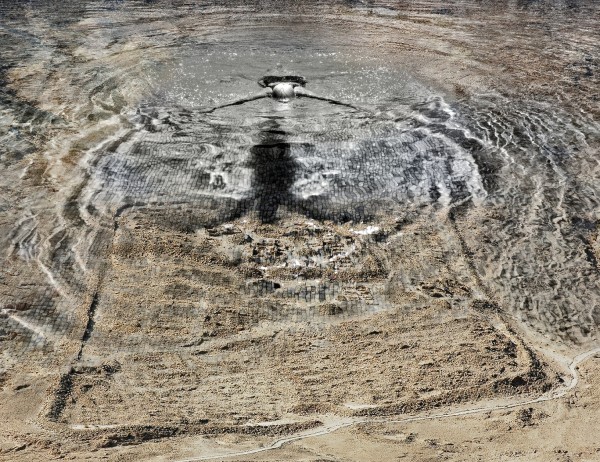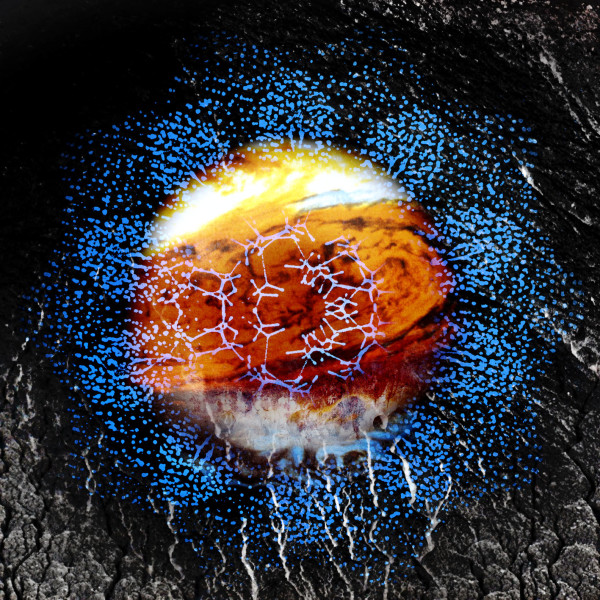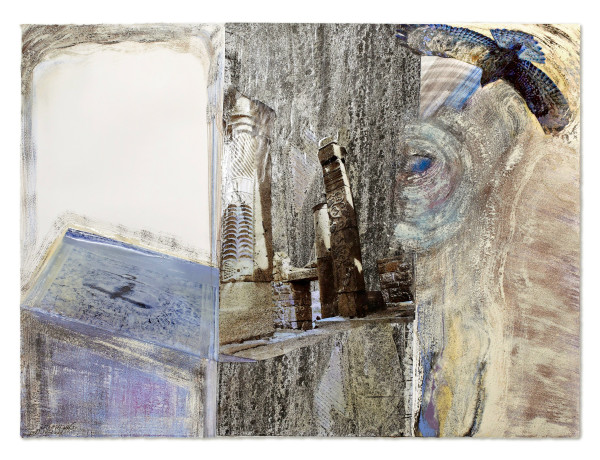A self-reflexive process alluding to earlier body works, b/w photographs from the late 1970s, takes shape in Imprints-Inlands Visibility as a monochromatic photograph that preserves the conceptual format of a triptych. The combination of two typical narratives, "place" and "self-portrait," is manifested in the work via signs, shadows, impressions, and imprints (e.g. the impression of a drawn map reminiscent of eyes –gaze out of the sand). An encapsulated reflection of this underlying concept is drawn on the right as a symbolic imprint; a spiral drawing of a sea shell that keeps the "brief history of time" . In the photograph depicting the shadow of the body during movement in water, a mental projection of the essence of the personal gaze is created, and the subject of the body becomes part of the texture of the general substance, in keeping with Maurice Merleau-Ponty's philosophical description: "The enigma derives from the fact that my body simultaneously sees and is seen. That which looks at all things can also look at itself and recognize, in what it sees, the 'other side' of its power of looking."1
1. Maurice Merleau-Ponty, "Eye and Mind," The Merleau-Ponty Aesthetics Reader: Philosophy and Painting, trans. Michael B. Smith (Evanston, Illinois: Northwestern UP, 1993), pp. 124-125.
- Current Location: Studio











